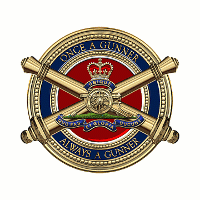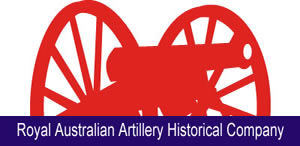Ray Cook was born in Brisbane on 21st March 1924. He attended Junction Park State School and then started work at Littledykes to become a French Polisher. In 1942, after the bombing of Darwin, he joined the Army. He was recruited in Adelaide Street and walked up to St Lawrence College to be sworn in with about 50 others. They were given two dog biscuits and a cup of tea for lunch and then walked down to Vulture Street Station and boarded the train to Wynnum North. From there they walked to Fort Lytton where he underwent three months training for the Heavy Coastal Artillery and celebrated his 18th birthday.
At Tabragalba, near Beaudesert, he trained on 155 mm Long Toms, 3.7 inch and 40 mm Bofors (both Anti-Aircraft guns). He was then transferred to the northern end of Bribie Island where there was a battery of 6-inch guns that monitored shipping into and out of Brisbane. After Bribie Island, he was then sent by troop train from Brisbane Exhibition Grounds to Townsville, where he boarded a troop ship headed for the Torres Strait. Once there, he was drafted to a 4.7-inch Battery at Millman Hill. In early 1944 he was transferred to the 2nd Australian Water Transport and spent time supplying troops stationed on the Gulf side of Cape York. The unit was then split up, renamed the 4th Australian Marine Food Supply Platoon and sent to New Guinea. They ran into a cyclone in the Coral Sea that belted them around for two days and then were chased out of Milne Bay by an air raid. They used small boats to drop supplies all along the coast and when peace was declared they had to collect Japanese prisoners and transport them to Rabaul. During this time Ray ended up in Rabaul Military Hospital with Dysentery, Typhus, Malaria and Hookworm and underwent a Tonsillectomy for good measure. He was 21 when he came out of hospital.
Back in civvie life, Ray married the love of his life, Eileen Warbrook on 22nd June 1946 and wen to Surfers Paradise for their honeymoon. They built a house at Moorooka and between 1947 and 1956 they had four girls and a boy. Ray started his own business as a French Polisher and Spray Painter and helped many of his mates with their motor bikes at the Speedway and Ekka tracks. When his father died, Ray and family moved back to his childhood home at Real Street, Annerley and cared for his mother. He commenced work at Queensland Newspapers and did an apprenticeship as a Rotary Letterpress Machinist and worked permanent night shift. Having a steady job with five weeks leave, Ray outfitted a Kombi Van and the whole family spent many hours on the road touring Australia during this time. In 1984, after 26 years at Queensland Newspapers he retired and spent the next few years travelling around Australia and abroad including New Guinea.
In 1988, Ray’s interest to restore the guns at Fort Lytton was sparked and under his leadership the Fort Lytton Guides were formed. Ray became the inaugural President. Ray, Dick Phillip and other guides made a commitment to turn Fort Lytton into a tourist attraction by restoring many of the original guns, including the Armstrong Disappearing gun, and setting up a Military memorabilia museum. In the initial stages both serving and ex-serving Army personnel, including Harry Lynas, contributed immensely to this project. They were assisted by National Parks staff in general with Bryan Davidson in particular. The actual work took place from 1992 to 2001 at a cost of approximately $40,000, including many contributions of both material and labour from local businesses. At the same time, Eileen, along with many of the other wives, ran the Fort Lytton Canteen to provide refreshments to the tourists after their tours of the Fort. This helped to raise much needed funds for ongoing restoration work. Ray was a founding member of the Fort Lytton Historical Association, a member since 1958 of the Stephens Sub-branch of the RSL, life member of the Royal Artillery Association (Queensland) and in 1992, he received the Medal of the Order of Australia Medal (OAM) for his services to local history.
Ray was an independent man and continued to live at Real Street after Eileen’s death in 2003. He was fortunate to have the support and love of good friends and neighbours, who kept a close eye on him. After two falls at home in early September, Ray moved to Gympie to be cared for by his daughter Barbara. Unfortunately, this turned out to be for only a short time. Ray succumbed to pneumonia and passed away peacefully in Gympie Private Hospital on 3rd October 2012. Ray is survived by his sister Rita, five children, 11 grandchildren and four grandchildren who will miss him dearly.
Acknowledgements:
- Extracted from the Eulogy prepared by Rays family
- Compiled from notes of the late Arthur Burke
|






